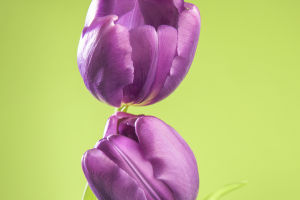Tulips, with their exquisite charm and vibrant colors, have captivated many renowned artists, such as Vincent van Gogh, Claude Monet, and Pablo Picasso.
The allure of tulips extends beyond their visual appeal; they embody profound cultural significance and offer rich potential for artistic expression.
This fascination is not solely rooted in the flowers' beauty but also in their deep cultural, emotional, and artistic implications.
The tulip was introduced to Europe in the 16th century and rapidly became a cultural icon in the Netherlands and across the Western world.
By the 17th century, tulips had transcended their role as merely ornamental plants; they became symbols of wealth and status, leading to the historical phenomenon known as "Tulip Mania."
This period, characterized by speculative trading of tulip bulbs, underscores the flower's powerful socio-economic significance. For many artists, tulips represent more than just elements of nature; they reflect broader cultural and social dynamics.
In artistic creation, the diverse colors and forms of tulips offer artists an extensive palette of expressive possibilities. Van Gogh, Monet, and Picasso each harnessed the tulip's aesthetic qualities to enrich their creative visions.
Vincent van Gogh’s works frequently feature tulips, which he renders with bold colors and dynamic forms. For Van Gogh, tulips are more than just flowers; they are a testament to his intense passion for life and nature.
His use of vibrant hues and expressive brushstrokes conveys a sense of vitality and emotional depth, reflecting his broader artistic goals of capturing the essence of his subjects.
Claude Monet, a pioneer of Impressionism, approached tulips from a different perspective. His paintings often depict tulips under varying light conditions, emphasizing the subtle interplay of color and shadow.
Monet’s soft, fluid brushwork and delicate color palette highlight his sensitivity to the natural world. Through his depiction of tulips, Monet explores the fleeting nature of light and the ephemeral beauty of his subjects, which are central themes in Impressionist art.
Pablo Picasso, known for his role in developing Cubism, reimagined tulips through geometric abstraction. By incorporating tulips into his Cubist works, Picasso deconstructed and reassembled their forms, using bold colors and fragmented shapes.
This approach reflects his innovative exploration of artistic form and structure. For Picasso, tulips become a vehicle for experimenting with spatial relationships and perspectives, demonstrating his commitment to breaking away from traditional artistic conventions.
Beyond their visual and stylistic contributions, tulips serve as powerful symbols of emotion in art. For these artists, tulips are not just beautiful objects; they are carriers of emotional and intellectual expression. Van Gogh’s portrayal of tulips communicates his fervent engagement with life and nature.
Monet’s focus on light and shadow reveals his nuanced perception of natural beauty. Picasso’s abstract representations of tulips highlight his revolutionary approach to form and space.
Tulips, through their diverse forms and meanings, offer a rich canvas for exploring themes of beauty, culture, and personal expression. The works of these artistic masters demonstrate how tulips can serve as multifaceted symbols, bridging cultural divides and expanding the boundaries of artistic expression.
Through their depictions of tulips, these artists invite viewers to experience the beauty of the natural world and to engage with the deeper meanings embedded within their art.


